Home> Company News> How to Read and Interpret Hydraulic Pump Schematics: A Beginner's Guide
- AddressTianqiao, Beiyuan District, Jinan,Shandong
- Worktime9:00-18:00(Beijing time)
- Phone(Working Time)0531-8299 9953
Hydraulic systems are used in various applications, from heavy machinery to automobiles, and their proper functioning is critical for optimal performance. The hydraulic pump is one of the essential components in a hydraulic system, responsible for generating fluid flow and maintaining system pressure. As such, the ability to read and interpret hydraulic pump schematics is essential for anyone working with hydraulic systems.
In this beginner's guide, we will explore the basics of hydraulic pump schematics and learn how to read and interpret them. Understanding hydraulic pump schematics can help you design, install, and troubleshoot hydraulic systems more efficiently. By analyzing the schematic, you can identify potential issues such as leaks, pressure drops, and flow restrictions, and troubleshoot the problem more effectively.
One of the essential skills required to read and interpret hydraulic pump schematics is the ability to understand the different symbols used to represent hydraulic components. Symbols used in hydraulic pump schematics include lines, arrows, and boxes. Arrows indicate the direction of fluid flow, while boxes represent the different hydraulic components. By understanding the symbols, you can identify the different components in the hydraulic system and their functions.
A hydraulic pump schematic is a diagram that shows the layout of hydraulic components in a system and how they interact with each other. Some of the essential components in a hydraulic pump schematic include the pump, valves, actuators, and reservoir. The pump is responsible for generating fluid flow, while valves are used to control the flow of fluid in the hydraulic system. Valves can include directional control valves, pressure control valves, and flow control valves. Actuators are devices that convert fluid energy into mechanical energy and include cylinders and motors. The reservoir is the storage container for hydraulic fluid in the system.
Interpreting hydraulic pump schematics involves understanding how the different components interact with each other and affect the overall system performance. By analyzing the schematic, you can identify potential issues such as leaks, pressure drops, and flow restrictions. Once you have identified the issue, you can use the schematic to locate the faulty component and troubleshoot the problem.
Understanding hydraulic pump schematics can help you reduce downtime, increase productivity, and improve overall system performance. By reading and interpreting hydraulic pump schematics, you can save time and money by identifying and fixing problems before they become major issues. In conclusion, reading and interpreting hydraulic pump schematics is an essential skill for anyone working with hydraulic systems. With practice, you can become proficient in reading and interpreting hydraulic pump schematics and enhance your ability to work with hydraulic systems.
Understanding Hydraulic Pump Schematics
A hydraulic pump schematic is a visual representation of a hydraulic system, showing the layout of hydraulic components and how they interact with each other. The schematic displays the different types of hydraulic pumps, their functions, and the flow of hydraulic fluid through the system.
To understand a hydraulic pump schematic, you need to be familiar with the different types of hydraulic pumps, such as gear pumps, vane pumps, and piston pumps. Each type of pump has its own specific function and is used in different hydraulic applications.
The schematic also displays other important components in the hydraulic system, including valves, actuators, and the reservoir. Valves are used to control the flow of fluid in the hydraulic system and can include directional control valves, pressure control valves, and flow control valves. Actuators are devices that convert fluid energy into mechanical energy and include cylinders and motors. The reservoir is the storage container for hydraulic fluid in the system.
By understanding the components in the schematic, you can identify how they interact with each other and affect the overall performance of the hydraulic system. This can help you troubleshoot problems more efficiently and improve system performance.
Components of a Hydraulic Pump Schematic
In a hydraulic pump schematic, each component in the system is represented by a unique symbol that helps to identify it. Some of the critical components in a hydraulic pump schematic include the pump, valves, actuators, and reservoir.
The pump is the primary component of a hydraulic system, and its function is to generate fluid flow. The pump can be of different types, such as gear pumps, vane pumps, and piston pumps. Gear pumps are the simplest and most economical pumps and are suitable for low-pressure applications. Vane pumps are known for their smooth operation and are often used in mobile equipment, while piston pumps are the most efficient and are used in high-pressure applications.
Valves are another essential component in a hydraulic pump schematic and are used to control the flow of fluid in the system. There are several types of valves used in hydraulic systems, including directional control valves, pressure control valves, and flow control valves. Directional control valves are used to control the direction of fluid flow in the system, while pressure control valves are used to maintain a specific pressure level. Flow control valves regulate the flow of fluid in the system.
Actuators are devices that convert fluid energy into mechanical energy and are used to perform work in a hydraulic system. Some of the most common actuators include cylinders and motors. Cylinders are used to create linear motion and can be of different types, such as single-acting and double-acting cylinders. Motors, on the other hand, are used to create rotary motion and can be of different types, such as hydraulic motors and electric motors.
The reservoir is the storage container for hydraulic fluid in the system. It is essential to have a properly sized reservoir to ensure that there is enough fluid available to operate the system efficiently. The reservoir also helps to dissipate heat generated by the system and provides a place for contaminants to settle.
In summary, understanding the different components of a hydraulic pump schematic is essential to interpreting how the system works. Each component plays a critical role in the operation of the system and affects the overall system performance.

Reading Hydraulic Pump Schematics
To read a hydraulic pump schematic, you need to have a good understanding of the symbols used to represent the different components in the system. Some of the common symbols used in hydraulic pump schematics include lines, arrows, and boxes. Each symbol represents a different component in the hydraulic system.
Lines are used to represent hydraulic pipes and tubing that connect the different components in the system. The lines can be either solid or dashed, depending on their function in the system. Solid lines represent pipes or tubing that carry fluid under pressure, while dashed lines represent pipes or tubing that carry fluid under vacuum or low pressure.
Arrows indicate the direction of fluid flow in the hydraulic system. The arrow's head points in the direction of fluid flow, while the tail indicates the source or the direction of fluid return.
Boxes are used to represent the different hydraulic components in the system. The size and shape of the box indicate the type of component, while the symbol inside the box represents the specific component.
For example, a circle inside a box represents a hydraulic pump, while a square inside a box represents a hydraulic motor. A triangle inside a box represents a hydraulic cylinder, while a diamond inside a box represents a directional control valve.
In addition to the symbols for hydraulic components, hydraulic pump schematics may also include symbols for pressure relief valves, check valves, flow control valves, and other types of hydraulic valves. Each of these symbols has a specific meaning and can help you identify the different types of hydraulic valves in the system.
Once you have a good understanding of the symbols used in hydraulic pump schematics, you can read the schematic to identify the different components in the hydraulic system and how they interact with each other. By analyzing the schematic, you can also identify potential issues such as leaks, pressure drops, and flow restrictions. This information can help you troubleshoot problems and improve system performance.
Interpreting Hydraulic Pump Schematics
Interpreting hydraulic pump schematics is an essential skill that can help you understand how the different components in a hydraulic system interact with each other and affect system performance. It involves analyzing the schematic to identify potential issues and locating faulty components to troubleshoot the problem.
To interpret a hydraulic pump schematic, you need to understand the symbols used to represent the different components in the system. Some of the common symbols used in hydraulic schematics include lines, arrows, boxes, and circles.
Lines in a hydraulic schematic represent the flow of fluid in the system. Arrows on the lines indicate the direction of flow, with the direction of the arrow showing the direction of fluid flow.
Boxes in a hydraulic schematic represent the different hydraulic components in the system, such as pumps, valves, actuators, and reservoirs. Each box has a unique shape and size that represents the specific component.
Circles in a hydraulic schematic represent different types of pressure control valves, including relief valves, sequence valves, and reducing valves.
Interpreting hydraulic pump schematics also involves understanding how the different components interact with each other. For example, a directional control valve controls the flow of fluid in the system and determines the direction of fluid flow. A pressure control valve, such as a relief valve, regulates the pressure in the system and protects the hydraulic components from overpressure.
By analyzing the hydraulic pump schematic, you can identify potential issues such as leaks, pressure drops, and flow restrictions. For example, if the hydraulic system is not generating enough pressure, you can use the schematic to locate the faulty component, such as a clogged filter, and troubleshoot the problem.
Interpreting hydraulic pump schematics requires a good understanding of hydraulic components, their functions, and how they interact with each other. With practice, you can become proficient in reading and interpreting hydraulic pump schematics and enhance your ability to work with hydraulic systems.
Benefits of Understanding Hydraulic Pump Schematics
Understanding hydraulic pump schematics has numerous benefits for those who work with hydraulic systems. Here are some of the key benefits:
-
Efficient Design: With a proper understanding of hydraulic pump schematics, you can design hydraulic systems that are efficient and meet the desired performance requirements. By knowing the different components and their functions, you can optimize the system layout and select the right components to meet the required flow rate, pressure, and fluid volume.
-
Installation: By reading the hydraulic pump schematic, you can identify the correct installation location of different hydraulic components, and ensure that they are installed correctly. This helps to prevent leaks, pressure drops, and flow restrictions.
-
Efficient Troubleshooting: Hydraulic pump schematics can help you identify and locate the source of a problem in the hydraulic system. By analyzing the schematic, you can determine which component is faulty and how it is affecting the overall system performance. This can help you save time and money by avoiding unnecessary component replacements.
-
Improved Safety: Understanding hydraulic pump schematics can help you identify potential safety hazards in the system. By identifying pressure points and areas with a high risk of leakage, you can take appropriate measures to reduce the risk of accidents and injuries.
-
Increased Productivity: By understanding hydraulic pump schematics, you can troubleshoot and fix problems more efficiently, reducing downtime and increasing productivity. This can lead to cost savings and improved profitability.
-
Regulatory Compliance: In some industries, regulatory compliance is critical for the operation of hydraulic systems. Understanding hydraulic pump schematics can help you ensure that your system is compliant with industry standards and regulations.
Overall, understanding hydraulic pump schematics can help you optimize the performance of hydraulic systems, improve safety, reduce downtime, and increase productivity.

Hydraulic pump schematics are crucial to the understanding of hydraulic systems, their functions, and their performance. Reading and interpreting these schematics can help in troubleshooting problems and improving system performance. This beginner's guide has highlighted the importance of hydraulic pump schematics and how to read and interpret them. By understanding the symbols used to represent different hydraulic components, one can identify issues such as leaks, pressure drops, and flow restrictions. With practice, anyone can become proficient in reading and interpreting hydraulic pump schematics and become more effective in working with hydraulic systems. By doing so, they can reduce downtime, increase productivity, and save time and money in identifying and fixing problems before they become major issues. It is, therefore, essential to acquire this skill for anyone working with hydraulic systems.


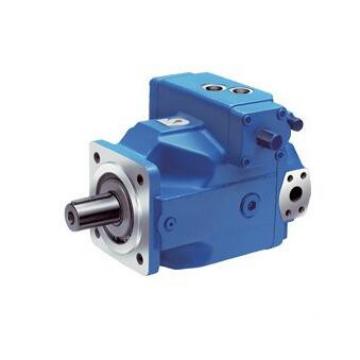 USA VICKERS Pump PVH131R13AF30B252000002001AB010A
USA VICKERS Pump PVH131R13AF30B252000002001AB010A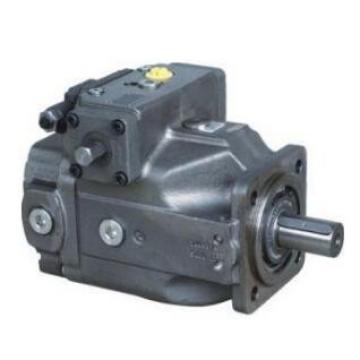 Parker Piston Pump 400481002108 PV140R1K1B4NWLZ+PGP517A0
Parker Piston Pump 400481002108 PV140R1K1B4NWLZ+PGP517A0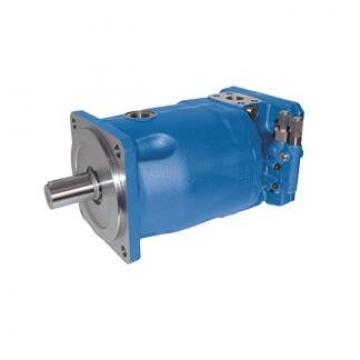 Parker Piston Pump 400481003286 PV180R1K1A4NYCD+PGP511A0
Parker Piston Pump 400481003286 PV180R1K1A4NYCD+PGP511A0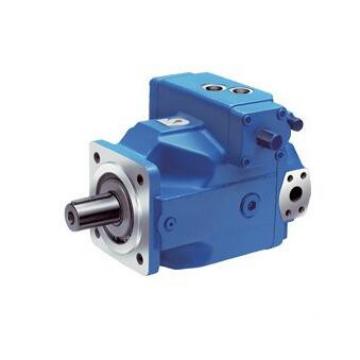 USA VICKERS Pump PVH057R02AA10B25200000100100010A
USA VICKERS Pump PVH057R02AA10B25200000100100010A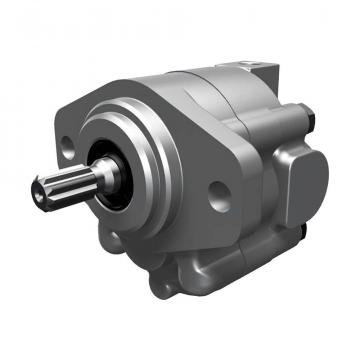 Parker Piston Pump 400481004166 PV270R9K1B4NYLZK0033+PVA
Parker Piston Pump 400481004166 PV270R9K1B4NYLZK0033+PVA